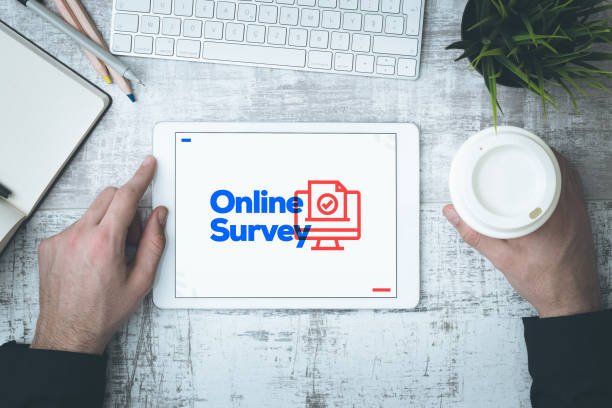Hey there! If you’ve landed on this article, you’re likely curious about how to craft effective questionnaires that generate insightful data. Let’s dive deep into the techniques that can help us unlock the secrets to effective questionnaire design, turning bland surveys into engaging tools for gathering valuable information.
The Power of Questionnaires
Questionnaires are essential for collecting data across various fields, from market research to academic studies. The effectiveness of a questionnaire directly impacts the quality of the data collected. A well-designed questionnaire can yield high response rates and detailed insights, while a poorly constructed one may lead to misleading results and respondent fatigue.
Understanding Your Audience
To create a questionnaire that resonates with respondents, it’s crucial to understand your target audience. Are they tech-savvy millennials, busy professionals, or retirees? Each group has its preferences and expectations when filling out surveys.
Audience Analysis Framework
| Audience Group | Preferences | Common Concerns |
|---|---|---|
| Millennials | Mobile-friendly, engaging | Lengthy surveys, irrelevant questions |
| Professionals | Concise, to-the-point | Time constraints, clarity |
| Retirees | Simple layout, larger font | Complexity, length, privacy |
In my experience, tailoring questionnaire design to meet the preferences of your audience can significantly improve engagement. For instance, millennials may appreciate interactive elements and mobile compatibility, while retirees may require straightforward language and a clean layout.
Crafting Questions that Matter
The heart of any questionnaire lies in its questions. Thoughtful question crafting can make or break your survey experience.
-
Types of Questions: Use a mix of open-ended and closed-ended questions. Closed questions offer quantitative data, while open-ended questions provide qualitative insights.
- Closed-ended question example: “How satisfied are you with our service? (1-5 rating)”
- Open-ended question example: “What features would you like to see improved?”
-
Clarity Is Key: Avoid jargon and overly complex language. Questions should be easy to understand, ensuring that respondents know exactly what you’re asking.
-
Neutrality: Ensure that your questions are unbiased. Leading questions can skew results and undermine the integrity of your data.
The Role of Question Order
The order of questions can influence how respondents perceive and answer them. Group similar topics together, starting with easy questions before moving to more complex ones. This method helps to reduce survey fatigue and keeps users engaged.
Question Order Impact Example
| Question Position | Response Rate | Comment |
|---|---|---|
| Start with easy | 95% | Engages quickly |
| Mid-survey switch to complex | 70% | Fatigue sets in |
| End with open-ended | 60% | Well-received if engaged |
Incorporating User Feedback
I always encourage gathering user feedback on the questionnaire itself. After respondents complete the survey, ask them for their opinions on the experience.
Sample Feedback Questions
- “Was the questionnaire easy to understand?”
- “Did you feel that any important questions were missing?”
- “How would you rate your overall experience?”
This feedback allows you to refine your approach, creating better experiences in future surveys.
Data Visibility and Analysis
Once data collection is complete, the next crucial step involves analyzing the results. Tools like Excel and Google Sheets are great for analyzing data, but you can also use more sophisticated statistical software when necessary.
Example of Data Analysis
Consider the following fictional data from a survey conducted on customer satisfaction:
| Response Category | Count | Percentage |
|---|---|---|
| Very Satisfied | 120 | 40% |
| Satisfied | 150 | 50% |
| Unsatisfied | 20 | 6.67% |
| Very Unsatisfied | 10 | 3.33% |
From this table, it’s easy to see that 90% of respondents are either satisfied or very satisfied with the service offered. Such data can help shape business strategies moving forward.
Enhancing Questionnaire Design with Technology
Embracing technology can elevate the effectiveness of your questionnaires. Platforms like SurveyMonkey, Google Forms, or Typeform offer various features that enhance user experience. They provide templates and analytics tools that simplify the process of questionnaire design and result analysis.
A/B Testing Your Questions
A/B testing involves sending two different versions of your questionnaire to two groups of respondents and comparing the outcomes. This method can be incredibly useful in understanding which questions or formats work best.
For example, if you are unsure whether to use a star rating system or a numerical scoring system, create two versions of the questionnaire. Analyze engagement and responses to determine which format yields better results.
Real-world Examples
In one of my recent projects, I worked with a local restaurant that wanted to improve its customer experience. We designed a short questionnaire focusing on food quality, service speed, and menu variety.
The results were fascinating. Over 80% of respondents rated food quality as “excellent,” while many provided detailed feedback about service time. The restaurant implemented changes based on this data and saw a 30% increase in repeat customers over three months.
Conclusion (Just Kidding)
There’s no conclusion here yet. This topic is vast and continuous as new techniques and technologies emerge. Exploring the nuances of questionnaire design and leveraging insights from user feedback can continuously improve your data collection processes.
Remember, designing an engaging and effective questionnaire is not just a task; it’s a combination of art and science. Understanding your audience, crafting the right questions, and embracing technology will help unlock the full potential of your surveys. Keep experimenting and evolving—great things await on your quest for insightful data collection!




